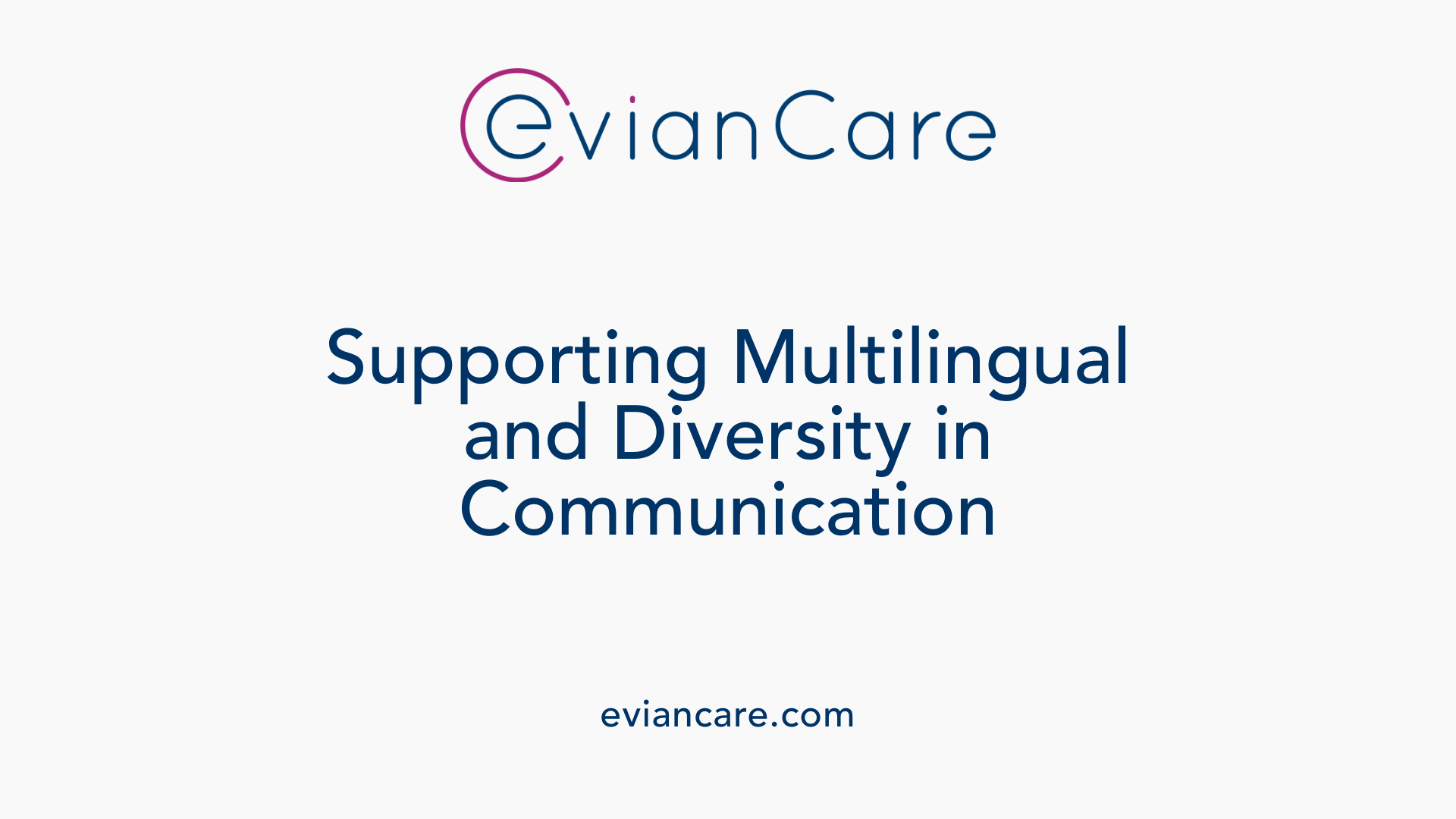
Fostering Emergent Language Through AAC Interventions
Augmentative and Alternative Communication (AAC) is transforming early language development and literacy for children with complex communication needs. By providing alternative means to express themselves, AAC supports not only speech development but also foundational skills in literacy and social participation. This article explores how evidence-based practices, clinical research, multilingual considerations, and personalized strategies converge to maximize language outcomes for emergent and neurodivergent learners.
Supporting Early Language Development with AAC

How can AAC support early or emergent language development in children?
Augmentative and alternative communication (AAC) offers essential channels for early language growth in children with complex communication needs. By providing alternative means for expressing thoughts and needs, AAC enables children to participate actively in social interactions, which is critical for vocabulary expansion and social-emotional development. Incorporating AAC into routines like shared reading and writing not only introduces children to print and symbol recognition but also lays the foundation for phonological awareness. For example, using picture exchange systems or speech-generating devices during reading sessions encourages children to connect symbols with spoken words.
Teaching strategies such as modeling AAC use during activities, pausing to allow responses, and engaging children with open-ended questions foster semantic development. Collaborating with caregivers and educators through training and ongoing support ensures that children receive consistent and meaningful language opportunities. Overall, AAC helps children access rich language experiences, supporting their cognitive and social development.
What research evidence and clinical practices demonstrate the effectiveness of AAC in promoting emergent language skills?
Research consistently shows that AAC interventions are effective tools for fostering early language skills, including vocabulary, syntax, and literacy. For instance, case studies involving preschool children demonstrate that targeted AAC strategies lead to notable improvements in speech intelligibility and expressive vocabulary. Early introduction of AAC systems—whether aided or unaided—correlates with better language outcomes, supporting the idea that AAC does not inhibit speech development; in fact, it can facilitate it.
Clinical practices emphasize personalized AAC systems tailored to individual needs, utilizing visual symbols, core vocabulary, and multi-modal inputs. Integrating peer and caregiver interactions with AAC users enhances language learning, with studies indicating that augmented input from communication partners significantly boosts vocabulary and social skills. These findings affirm that when effectively implemented, AAC serves as a powerful tool for promoting emergent language in diverse populations.
What are effective strategies and approaches for implementing AAC to facilitate language growth in children?
Successful AAC implementation hinges on consistent modeling, interactive engagement, and contextual relevance. Frequent modeling of AAC devices during daily routines and play helps children understand and learn functional language use. Using AAC tools within meaningful interactions—such as conversations, storytelling, and games—encourages children to comment, ask questions, and initiate communication.
Training families, teachers, and caregivers in effective interaction techniques is crucial to creating a supportive environment. Personalizing AAC devices by adapting vocabulary, symbols, and visual themes ensures better fit and function for the user. Promoting all communication functions beyond requesting, including commenting and protesting, helps develop a comprehensive language repertoire.
Ongoing professional support and encouragement further reinforce effective use of AAC, fostering independence and confidence in communication efforts.
How can AAC be integrated with literacy development and instructional routines?
Integrating AAC into literacy learning involves embedding symbol-based activities into everyday educational practices. Shared reading sessions, guided literacy exercises, and independent reading activities can incorporate AAC tools like picture symbols or digital apps (e.g., Proloquo2Go, LAMP Words for Life), enabling children to participate actively.
Activities such as shared writing, chart notation, and using AAC to select words or sentences promote print awareness, phonological skills, and early writing. Tailoring instruction to the child's literacy stage—whether emergent or conventional—ensures appropriate progression. For instance, emergent learners might focus on recognizing letters and sounds, while more advanced users practice decoding and text comprehension.
Using AAC during literacy activities supports vocabulary development, facilitates understanding of print concepts, and enhances overall communication skills, leading to increased independence and academic participation.
In what ways can AAC be applied in multilingual and translanguaging contexts?
In multilingual settings, AAC systems should reflect users’ full linguistic repertoire by including symbols, words, and phrases from multiple languages. Translanguaging—encouraging the flexible use of all languages—can be integrated into AAC routines by fostering environments where children are supported in expressing themselves across their linguistic landscape.
Practices like bilingual story reading, vocabulary sharing, and peer interactions promote language development and cultural identity. AAC supports can include culturally relevant symbols and language options that empower users to navigate different linguistic contexts comfortably.
Encouraging multilingual use with AAC reduces stigma and builds confidence. Collaborating with families to tailor AAC content ensures relevance and cultural appropriateness, supporting inclusive, equitable communication.
What role does AAC play in supporting neurodivergent learners and diverse communication needs?
AAC plays a vital role in enabling neurodivergent learners—such as individuals with autism, cerebral palsy, or Down syndrome—to access meaningful communication. Customizable AAC tools—ranging from gestures and picture boards to sophisticated speech-generating devices—meet diverse motor, sensory, and linguistic needs.
Using AAC supports social participation, emotional regulation, and independence, often improving behavioral outcomes by reducing frustration. Professional assessments help identify appropriate systems, ensuring that AAC supports facilitate rather than hinder speech development.
Inclusive approaches respect cultural and personal preferences, promoting competence and autonomy. Overall, AAC is fundamental in providing equitable communication opportunities, fostering full participation across educational, social, and community settings.
What assessment and treatment approaches are effective for using AAC to promote emergent language skills?
Effective assessment begins with comprehensive, ongoing evaluations that include dynamic assessment, naturalistic observation, standardized testing, and input from family and caregivers. These assessments inform personalized intervention goals focused on functional communication, literacy, and social interaction.
Treatment approaches often involve aided language modeling, core vocabulary instruction, visual supports, and system customization. For example, teaching children to use AAC devices for multiple functions—requesting, commenting, and asking questions—encourages diverse language use.
Naturalistic environments, peer interactions, and behavioral strategies reinforce communication attempts and promote generalization. Speech-language pathologists play a central role, collaborating closely with families and educators to adapt strategies and optimize emergent language development through targeted, data-driven interventions.
Harnessing AAC for Lifelong Communication Success
Integrating AAC into early language development, literacy routines, and multilingual contexts offers a powerful avenue to promote communication, independence, and social inclusion for children with diverse needs. Ongoing research, tailored interventions, and collaborative efforts among professionals, families, and educators are essential to optimize outcomes. As understanding and resources continue to evolve, AAC is poised to support the growth of emergent language skills more effectively than ever, ensuring all individuals can access their full communicative potential and thrive in their personal and social worlds.
References
- Augmentative and Alternative Communication Services for ...
- Augmentative and Alternative Communication (AAC)
- Integrating literacy with AAC instruction
- Personalized Early AAC Intervention to Build Language ...
- Applying a Developmental Model to Preliterate Aided ...
- TIES TIPS | Communicative Competence
- Exploring the Use of Augmentative and Alternative ...
- Enhancing AAC Interventions with Literacy Skills












